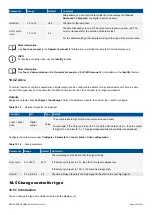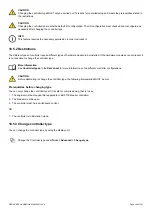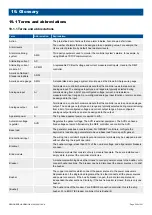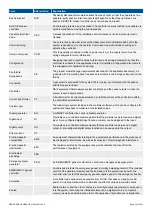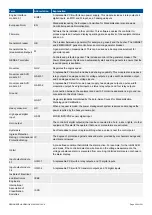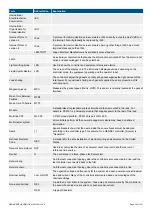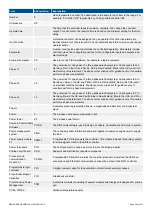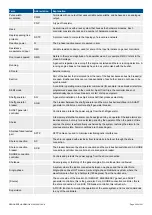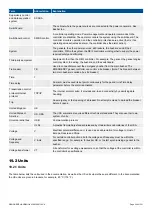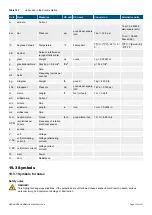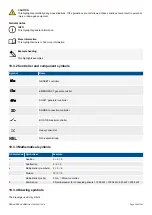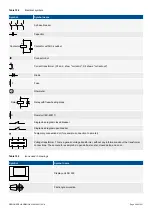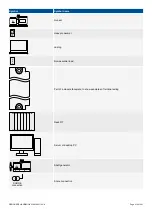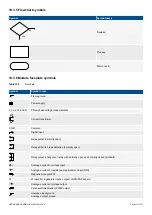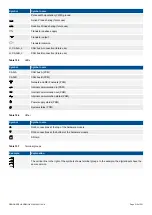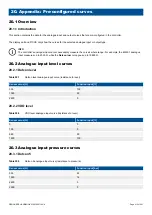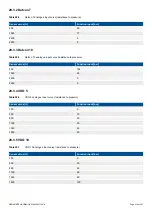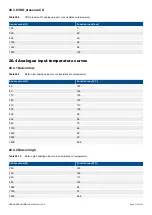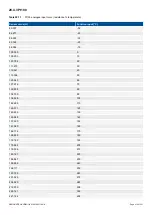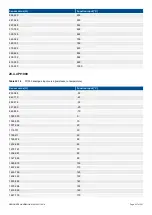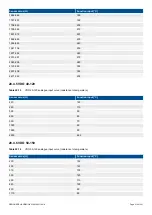
Term
Abbreviation
Explanation
International
Electrotechnical
Commission
IEC
International
Organization for
Standardization
ISO
Internet Protocol
version 4
IPv4
A protocol for communication across networks. IPv4 currently routes the most traffic on
the Internet, but will gradually be replaced by IPv6.
Internet Protocol
version 6
IPv6
A protocol for communication across networks. Among other things, IPv6 has a much
larger address space than IPv4.
JEM-TR177
Japan Electrical Manufacturers Association's noise standard.
Latch
An extra layer of protection that keeps the alarm action activated. When the alarm is not
active and acknowledged, it can be unlatched.
Light emitting diode
LED
Used to show the controller and equipment status and alarms.
Liquid crystal display
LCD
The screen of the display unit. The information displayed varies, depending on the
controller mode, the equipment operation and the operator input.
Load sharing
The controllers adjust the gensets so that each genset supplies the right amount of the
total power. For equal load sharing, each genset supplies the same proportion of its
nominal power.
Magnetic pickup
MPU
Measures the genset speed (that is, RPM). This sensor is normally located at the genset
flywheel.
Mean Time Between
Failures
MTBF
Mean Time To Failure MTTF
Module
A standardised, replaceable printed circuit board that is mounted in the rack. For
example, PSM3.1 is a hardware module that supplies power to the rest of the rack.
Multi-line 300
ML 300
A DEIF product platform. PPM 300 is part of ML 300.
Multi-master system
All controllers perform all the power management calculations, based on shared
information.
Name
[ ]
Square brackets show that the name inside the square bracket must be adapted
according to the controller type. For example, for a GENSET controller, [Source] is
"Generator".
National Electrical
Code
NEC
A standard for the safe installation of electrical wiring and equipment in the United
States.
Network time protocol NTP
Used to synchronise the time of a computer client or server to another server or
reference time source.
Neutral
N
The neutral line in a three-phase electrical system.
Network ring
An Ethernet connection topology where the controllers are connected in a line, and the
last controller is connected back to the first.
Network chain
An Ethernet connection topology where the controllers are connected in a line.
Nominal setting
nom or NOM
The expected voltage and frequency for the system, and each power source's maximum
load and current. Many of the controller's alarms are based on percentages of the
nominal settings.
Non-essential load
NEL
A load that is not critical to the system. These may be disconnected by the controller in
the event of over-load, over-current, or busbar under-current.
NPN
A type of transistor.
DESIGNER'S HANDBOOK 4189340911K UK
Page 503 of 521









